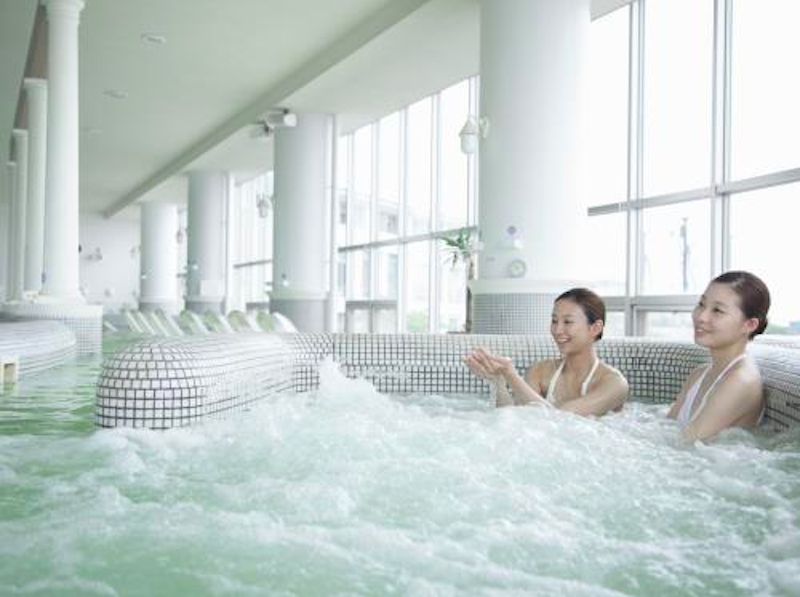Feb 26, 2020
Therapeutic Spa at Gamagori’s Thalgo Laguna
Whether natural spring onsen or communal bathing sentos, Japan’s penchant for soaking in the tub with friends and family is legendary, however, for those of us who have not necessarily grown up within that environment, we may feel reluctant to partake in these particularly Japanese pleasures. One hindrance could be that at these baths, it is required that we are naked, something that many of us may feel uncomfortable. Another reason could be that we want to enjoy these baths with partners, friends, or family of the opposite sex, which is difficult due to the nakedness mentioned above issue. And yet a further reason could be that we are dubious about the health claims that are propagated by those connected to the spa baths – we may consider claims of the healing properties of the waters to smell as fishy as some of the minerals found within them.
If you have an aversion to Japanese hot spas for any of the above reasons – or if you want to have a new, enjoyable experience – then Thalgo Laguna might be right up your alley.
About Thalgo Laguna
A part of the sprawling Laguna Ten Bosch park in Gamagori, Thalgo Laguna is a relaxing, saltwater spa pool complex that is enjoyable for unisex groups or individuals, where bathing costumes are required, and best of all, there is quantifiable science behind its claims to be legitimately therapeutic.
The pool itself, at first glance, resembles what could be arguably called the world’s least-exciting water park, with fifteen connected pools, though not a water slide to be found. However, as you climb into the water, you will soon discover that that is to miss the point entirely. Each of the fifteen baths has pressurized underwater jets that massage different parts of the body, intended to release tension from tired muscles and aching joints. Starting at the walking pool where you push against the current so that your heartbeat increases, you move from station to station, at each point working on a different part of the body, before ending at the 25m pool, in which you can either choose to swim lengths or, at designated times, take part in water aerobics classes.

The pools are dual-purpose, as you can use the jets as straightforward massage, or you can exercise with them, working against their force to gently stir muscles and increase the heart rate. Furthermore, the pools differ in temperature, switching from 33 to 36 degrees celsius, the change designed to shock the body into increasing metabolism. The perhaps one spurious claim that Thalgo Laguna makes is that their pools can help to increase basal metabolism, though I can find no evidence to back this up.
Laguna states that it should take somewhere between 50 and 60 minutes to complete the course, although you are free to spend the entire day there, and you may wish to return again and again to particular jet pools that massage areas on which you especially want to work. Or it may just be that you want to hang out for longer in the outdoor bubble bath, or lay on the submerged sun loungers as you watch the sun go down over the ocean to the west.
If you choose to spend the entire day there, you may want to partake in some of the additional services within the spa, including massage, mud treatments, sauna, steam rooms, and ice plunge pools. Some of these extras cost a little more, so do ask at the reception – there are some English-speaking staff.

There is also a cafe that serves an impressive buffet lunch, and if you want to have a bite to eat, all you need to do is chuck on your bathrobe and show the restaurant staff your locker key, and you can pay when you leave at the end of the day.
Thalgo Laguna Details
Where: Gamagori, Kaiyocho, 2 Chome−8 (map)
Website: lagunatenbosch.co.jp
Admission: Friday to Wednesday, 9:30 – 21:30, Thursday, 9:30 – 18:30. 4,400 JPY. Minimum age 16 years old. You should bring your own bathing suit and flip flops, though these can be bought or rented on site.
Getting there: There is a free shuttle bus that runs from Gamagori Station. Get off at the final stop, Laguna Spa.
Images: via https://www.lagunatenbosch.co.jp/laguna/english/other.html#tl– modified


About the author